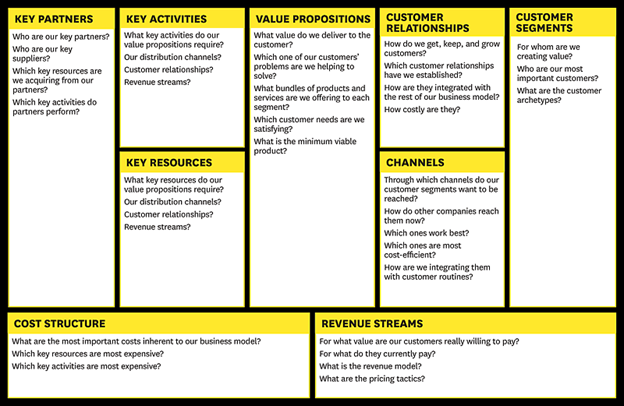Articulating Your Value—Geez: Why Don’t They Understand?
Introducing the Lean Canvas
The Lean Canvas methodology, also, referred to as a Business Model Canvas is according to Wikipedia, “It is a strategic management and lean startup template for developing new or documenting existing business model.”

It is no accident that the Value Proposition is at the center of the Lean Canvas. Without value an organization does not have a reason to exist much less make sales calls on customers.
The thrust of the four questions posed in the figure are about the customer and his or her NEEDS. Yet, how does an entrepreneur (or an established firm for that matter) know what a customer needs; especially with new potentially disruptive technology? Consider this scenario and see if it sounds familiar.
Sarah is an account representative for a startup firm that has a blockchain solution. Likely, it is just what the beleaguered E&P drilling company can benefit from greatly. Yet after numerous sales calls, great demonstrations and a lot of ‘good vibes’ nothing seems to be moving forward.
Sales objections have included:
- You’re a start up with almost no customer base (words to the effect—I don’t want to be first)
- Budgets are frozen
- Possible pending layoffs, sector consolidation, etc.
There always seem to be millions of reasons not to move forward. So, is this in the too hard to do category? Maybe Sarah should resign and go to work with a more established firm. No doubt her frustration and that of her management (with her) is growing.
Boom—Bust Realities
The energy sector has been severely cyclical. Conventional wisdom has come to accept that during a downturn, nothing happens. Often conventional wisdom is wrong!
That said, another conventional wisdom suggests that suppliers cannot increase revenue but only reduce ‘process cycle time’ and ‘costs’. While the IT department and engineering may be in ‘love’ with her blockchain solution, they may not be able communicate its value to their management either.
Who wants to go and ask for a risky capital expenditure in new technology these days? Who has the time when jobs are at risk?
Disrupting that Paradigm
Over the past year, this pundit has heard two energy sector business models that break from the past. First, organizations are actively looking for technologies that address the broad topics of cycle time and cost management. In some cases, the industry is looking for disruptive solutions that can add competitive value and are willing to acquire the technology early, invest and scale it to meet their needs.
The other popular model is investment of small amounts in technologies such as software that require little investment and are low risk. This is ‘root’ to most of the innovation and accelerators in the Houston Innovation Ecosystem. Either may fit an entrepreneur’s strategy.
In both scenarios and for those that seek the more traditional ‘early stage’ growth strategy, knowing what drives the decision-making process is paramount. In other words, their NEED.
Me, Me, Me
People resist change; right? That statement is absolutely correct! It is the reason most of us still use telephones tethered to the wall. Hah!
If it makes my life better, I want to change. If it just another poorly thought out management initiative; oh well ‘this too shall pass.’
The key to selling in times of stress is to find and successfully address all have for their individual concerns. This means that Sarah and her team must discover those very human drivers and incorporate these personal desires into her sales strategy. By the way, shareholders have personal wishes to, i.e., superior returns on their investments.
Moreover, fiduciary responsibilities and governance are huge issues at the C suite and Board levels. Sarah may need some help from her finance team to develop a strategy that addresses these matters. Her CFO can probably help as she/he has similar pressures.
This approach will not work for all companies—some of them will file for bankruptcy. But it does work for many and there is extensive support for this statement.
While this approach takes time and effort, GEM provides additional tools to help guide you. Contact us for additional information and access to our client portal.
Is Your Value Proposition Getting Through?
Next Time: Is the Customer Always Right?
